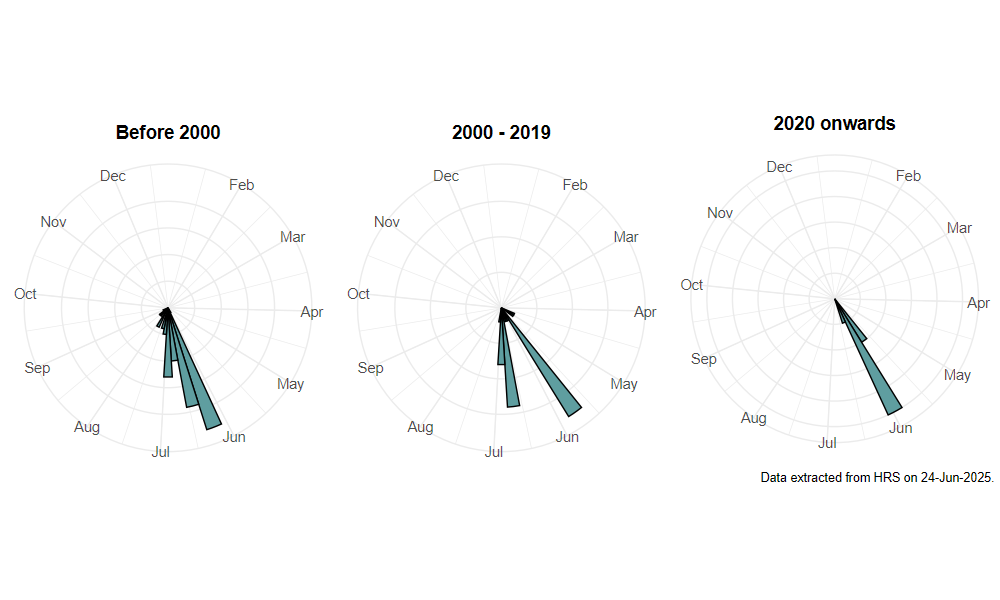Melanostoma certum (Haarto & Ståhls, 2014)
Identification
Identification difficulty = 4. ![]()
![]() according to Ball & Morris, 20241
according to Ball & Morris, 20241
Synonymy
Melanostoma dubium (Zetterstedt) of earlier works. There is much confusion about this species. Stubbs & Falk (1983)2 described 'form A', intermediate between M. dubium and M. mellinum, and the work of MacGowan et al. (1997)3 showed that these form an altitudinal cline and question whether M. dubium is really a separate species. Recent DNA analysis suggests that the interpretation of MacGowan et al. (1997)3 may be correct, but also did not support the separation of M. mellinum and M. scalare! A species that remains on the checklist until voucher material is checked.
Biology
The larva is unknown, but assumed to be a general predator amongst leaf litter like others of this genus. Adults are found at higher altitudes on moorland, especially along stream sides and around wet flushes.
Flight period
The following plots show the number of unique records per week excluding those reported to be of immature stages.

Status
Lower Risk (Nationally scarce) - Ball & Morris, 20144. Notable - Falk, 19915.
Distribution
Recorded from the main upland areas of Scotland and northern England from around 250m upwards. Perhaps most often found above 500m (although there is little hoverfly recording at this altitude). Although there are old records from the Pennines, Cumbria and Exmoor, there are very few recent English records and only from the higher peaks of the Cumbria.

-
Ball, S., & Morris, R. (2024). Hoverflies of Britain and Ireland. WILDGuides (3rd ed.). Oxford: Princeton University Press. ↩
-
Stubbs, A., & Falk, S. (1983). British Hoverflies: An Illustrated Identification Guide (1st ed.). Reading: BENHS. ↩
-
MacGowan, I., Gilbert, F., & Rotheray, G. (1997). The status of Melanostoma dubium (Diptera, Syrphidae). Dipterists Digest (Second Series), 3, 79–87. ↩ ↩
-
Ball, S., & Morris, R. (2014). A review of the scarce and threatened flies of Great Britain. Part 6: Syrphidae. ( No. 9). Species status (pp. 1–130). Peterborough: JNCC. ↩
-
Falk, S. (1991). A review of the scarce and threatened flies of Great Britain. ( No. 39). Research and Survey in Nature Conservation (pp. 1–194). Peterborough: NCC. ↩